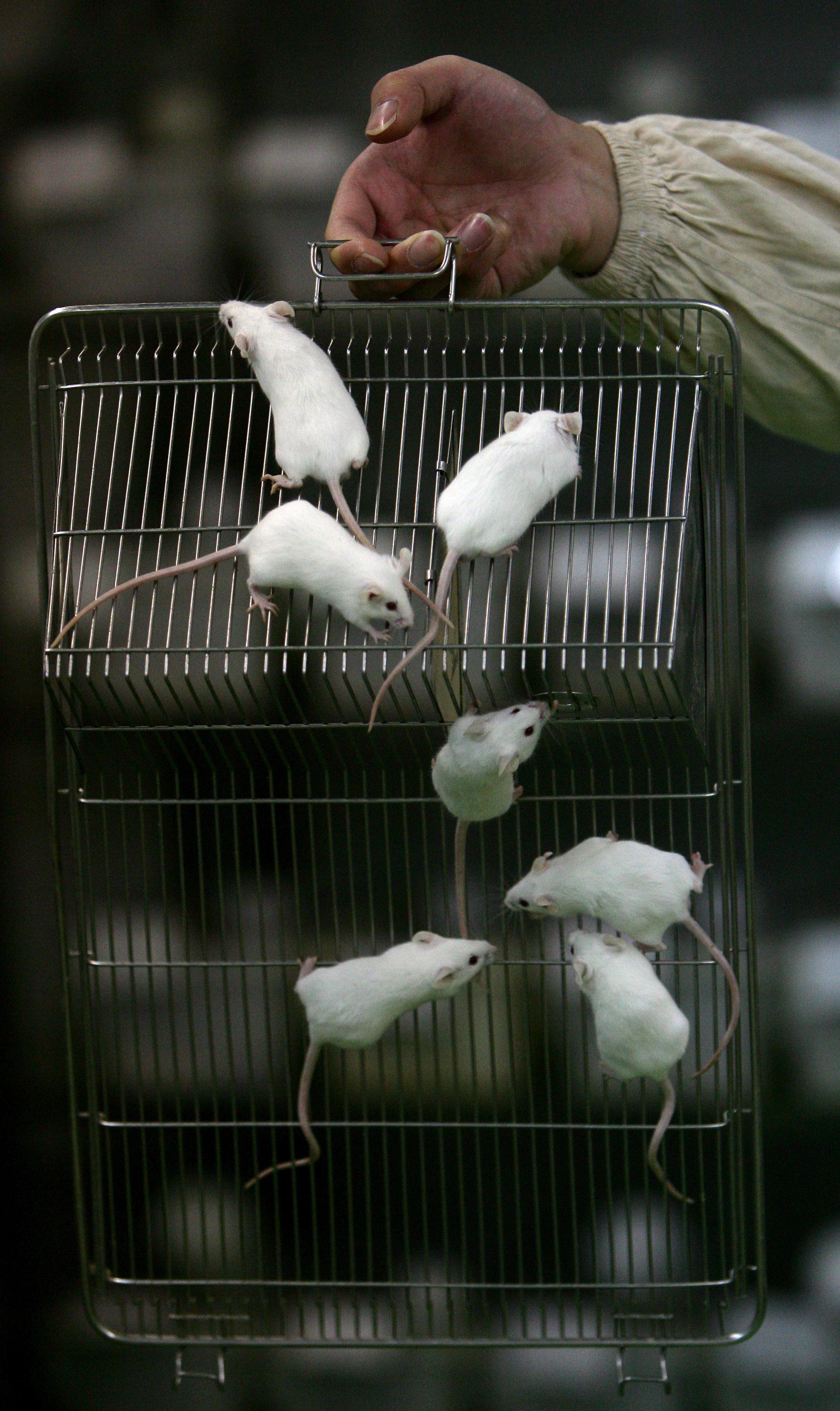Last week we learned that people can make smarter mice, but it’s not at all clear what the results of the recent experiment are saying about people.
More than 10 years ago, the distinguished Stanford University biologist Irving Weissman asked his colleague, law professor and ethicist Hank Greely, whether it would be ethically acceptable to grow a mouse with human brain cells. The question attracted far more attention than the answer Greely’s committee delivered (dear reader, proceed to the end for the answer), resulting in lots of misinformed and even incendiary chatter about talking mice.
The hypothetical Weissman experiment remained a dormant issue until the mid-’00s. As the implications of stem cell technology came into focus, the mouse brain discussion caught fire among social conservatives. The then-senator, now Kansas Gov. Sam Brownback declared himself a defender of the “unique dignity” of humans, and a candidate for Senate from Delaware had to play down her earlier statements that a mouse with a fully humanized brain had been created. President Bush declared his opposition to “human-animal hybrids” in his 2006 State of the Union address. The throwaway line provided delightful fodder for comedians but left more informed observers wondering whether his speech writers had conflated hybrids with chimeras and nearly everyone else wondering what the heck he was talking about.
Lost in the kerfuffle was the fact that many lab mice are already “chimerized” with a small number of brain cells from human sources, generally far less than 1 percent. These animals could provide important clues to the treatment of serious human diseases and to answer the basic question why human cognitive capacity is so much greater than that of other animals.
Now comes the remarkable study reported published in the March 7 issue of the influential journal Cell Stem Cell. Brains are made of neurons and glial cells. The experimenters took progenitors of human glial cells from aborted fetuses and grafted them into newborn mice that were bred with deficient immune systems so they wouldn’t reject the human cells. The resulting mature mouse brains were characterized by glial cells called astrocytes that are larger and more complex than the astrocytes of normal mice. These specialized cells have long been thought to be important in transmitting signals to other cells through neurotransmitters.
(Notably, one basis for the opposition to human embryonic stem cell research is that it could be regarded as “justifying” the destruction of human embryos and therefore such research undermines respect for nascent human life. But throughout the public debate about embryos in petri dishes, important research using fetal tissues from abortuses, like the mouse brain project, proceeded apace with barely a protest.)
In the recently reported experiment, University of Rochester and UCLA investigators found that, compared with mice that received glial progenitor cells from other mice, the ones with the transplanted human brain cells had measurable improvements in memory and in the ability to learn new tasks. Their performance in mazes and in locating objects was superior, and they were more easily conditioned for fear than the mice with only mouse glia.
The purpose of the study was not to make mouse perform better in IQ tests but to learn something about the evolution of human cognition. The work will no doubt enter the pantheon of cases that have sparked questions on both the left and the right about the power and direction of the modern life sciences. How much more adept may laboratory animals be made in order to gain valuable knowledge about ourselves and, perhaps, about the cellular origins of neurological disorders that are so great a burden on human life? In principle similar and perhaps highly informative studies could be undertaken with lower primates, though current rules would prohibit such efforts. These questions are especially pressing now, when attempts to develop better drug therapies for conditions like the dementias have hit a wall.
The new study also appears just as the neuroscience world is anticipating the Obama administration’s announcement of a “brain activity map” project. Fruit flies and zebra fish will be the first experimental models, with the mouse a good decade down the road. The genetics of brain development will be an important component of the new project.
In my book The Body Politic, I argue that the emergence of modern biology has created an unprecedented dilemma for the role of science in the American narrative, a nation that was founded in the spirit of the Enlightenment by people who believed deeply in the spirit of invention, but that also has preserved a commitment to traditional values. Dominion over nature is one of the core assumptions of America’s civic religion, especially if it contributes to human flourishing, as modern medical science surely does. Differing views about how far that dominion extends will continue to be part of America’s biopolitics.
It may be surprising, then, that the general reaction to the new study was muted. But it may not be that way for long. Furthermore, one can only wonder what the response would have been if the study had been published during the 2012 election season. In national politics, a candidate like Rick Santorum would have been most likely to take up the question. The state level is now the place to watch. Louisiana already has a law criminalizing the creation of human-animal hybrids and, most recently, Mississippi legislators are considering a similar bill.
And the Greely committee? They concluded that if the mouse brain was different, the experiment had to cease. Dr. Weissman did not proceed.
